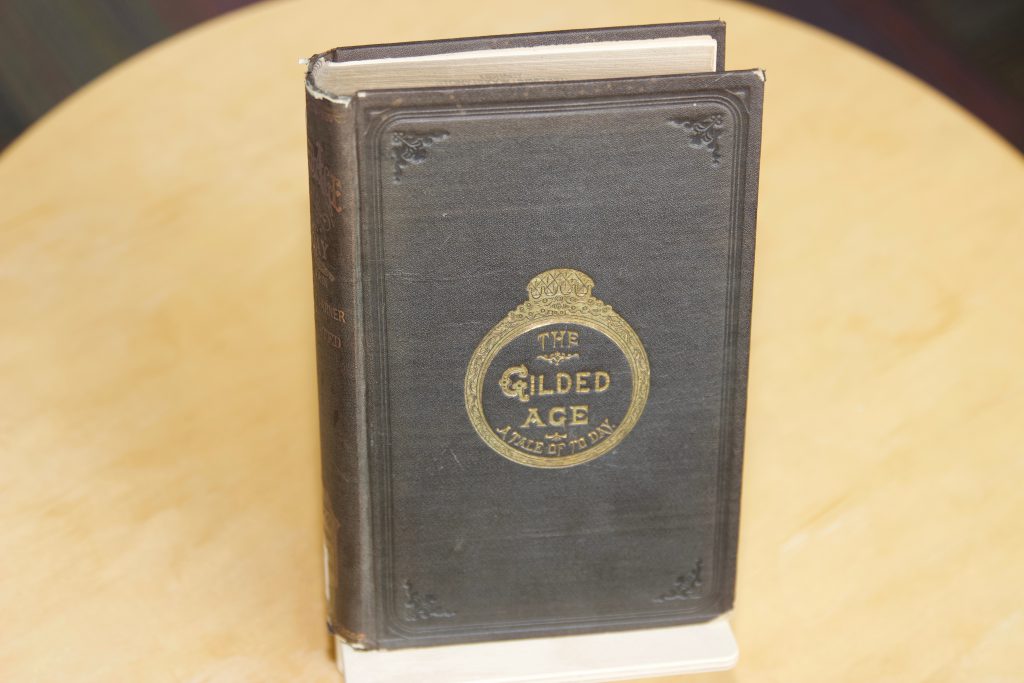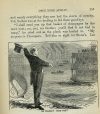Nestled in the stacks of the SBU Southampton library sits a brown, nondescript book with faded, golden font. A crest on the cover of the book reads The Gilded Age: A Tale of Today (1873), and the spine of the book reveals the book’s authors, Mark Twain and Charles Dudley Warner. The Gilded Age is notable because it offers a glimpse into what ran through Twain’s mind leading up to the creation of The Adventures of Tom Sawyer three years later (1876). It is equally important that The Gilded Age captures a snapshot of a key moment of American history where “new technology began to disseminate information and goods over huge distances with unprecedented speed” (Cunningham, 536). In many ways this book is intended as a global work of literature, as the authors state in the preface:
Our quotations are set in a vast number of tongues ; this is done for the reason that very few foreign nations among whom the book will circulate can read in a language but their own; whereas we do not write for particular class or sect or nation, but to take in the whole world.

The Gilded Age, a Tale of Today (1874)
Fresh off the American Civil War and the ensuing Reconstruction Era, the Gilded Age ran from the early 1870’s to about 1900, and included great economic growth and political movements. It was during The Gilded Age that the National American Woman Suffrage Association was formed. With The Gilded Age, Twain and Warner successfully captured an imprint of an era during its early years much like The Great Gatsby by F. Scott Fitzgerald did for the Roaring Twenties.

The Gilded Age
The title, The Gilded Age, hints at the ironic nature of the work. To be ‘gilded’ means to be coated in gold, but one might scratch away a layer of opulence and find decadence beneath. As Twain scholar Christopher D. Morris points out:
The Gilded Age’s plot and narrative techniques, including epigraphs and parabases, will also teach how reading entails a two-stage process of disillusionment—first with the text and then with mistaken acts of criticism derived from its misleading signs. The process begins with the title. (225)
The book’s subtitle, A Tale of Today, is unique in that stories are often told about things past and not things happening at the same time in which the fiction author writes. This book is an unflinching criticism of the current state of society during Twain’s and Dudley Warner’s time. In the preface, the authors indicate their plans to criticize the perceived “ideal state of society”.
The Gilded Age was one of great progress and great wealth, but also one of great corruption. Suffice it to say, The Gilded Age: A Tale of Today acknowledges these two realities. Have a look at some of these scanned images, and consider borrowing this book if you’d like a closer look!
- Emblem on book cover.
- p. 255
- p. 155
- p. 35
- p. 253
- p. 163







